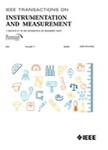版权所有:内蒙古大学图书馆 技术提供:维普资讯• 智图
内蒙古自治区呼和浩特市赛罕区大学西街235号 邮编: 010021

作者机构:Univ Ottawa Sch Informat Technol & Engn Ottawa ON K1N 6N5 Canada
出 版 物:《IEEE TRANSACTIONS ON INSTRUMENTATION AND MEASUREMENT》
年 卷 期:2011年第60卷第1期
页 面:44-56页
核心收录:
学科分类:0808[工学-电气工程] 08[工学] 0804[工学-仪器科学与技术]
主 题:Computer vision fractal dimension fuzzy c-means clustering (FCM) grey level cooccurrence matrix (GLCM) principal component analysis (PCA) surface roughness texture analysis woven fabric
摘 要:This paper presents inexpensive computer vision techniques allowing to measure the texture characteristics of woven fabric, such as weave repeat and yarn counts, and the surface roughness. First, we discuss the automatic recognition of weave pattern and the accurate measurement of yarn counts by analyzing fabric sample images. We propose a surface roughness indicator FDFFT, which is the 3-D surface fractal dimension measurement calculated from the 2-D fast Fourier transform of high-resolution 3-D surface scan. The proposed weave pattern recognition method was validated by using computer-simulated woven samples and real woven fabric images. All weave patterns of the tested fabric samples were successfully recognized, and computed yarn counts were consistent with the manual counts. The rotation invariance and scale invariance of FDFFT were validated with fractal Brownian images. Moreover, to evaluate the correctness of FDFFT, we provide a method of calculating standard roughness parameters from the 3-D fabric surface. According to the test results, we demonstrated that FDFFT is a fast and reliable parameter for fabric roughness measurement based on 3-D surface data.